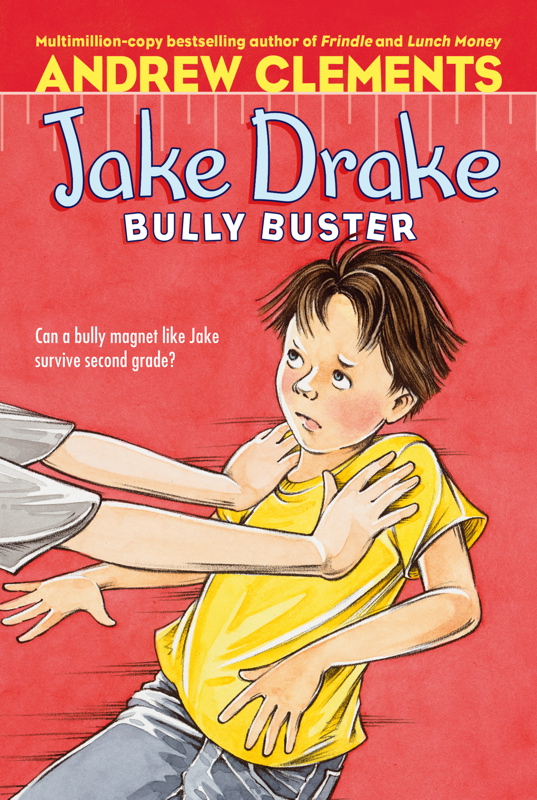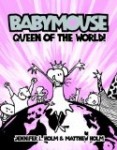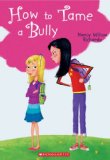Anti-Bullying Chapter Books, Novels and Graphic Novels
Recommended anti-bullying chapter books, graphic novels and novels for children, preteens and teens
We spend quite a lot of time reading books about bullying. We hope that parents and teachers will find our reviews helpful when working to help (or avoid) toxic social situations in classrooms and on youth teams. Please be sure to check out our page about anti-bullying picture books. Some of the books are intended for older readers.
Elsewhere on this site ~
– Our posts tagged “anti-bullying”
– Anti-Bullying Picture BooksBabymouse Queen of the World! Created by Jennifer L Holm and Matthew Holm
Graphic novel about bullying and social situations published by Random House Kids

Babymouse Queen of the World introduces a strong female character. Babymouse has a vivid imagination, she loves cupcakes, reading and scary movies. She longs for adventure, glamour and excitement and hopes for straight whiskers and no homework. Instead, Babymouse is stuck with chores, tons of homework, a locker that sticks and some very annoying curly whiskers.
When Babymouse hears about an upcoming slumber party to be hosted by Felicia Furrrypaws, she is willing to do almost anything to secure an invitation. When Felicia fails to complete a homework assignment, she acquires Babymouse’s book report in exchange for an invitation to her party. Babymouse ditches her best friend, Wilson the Weasel, misses their scary movie night and goes to the slumber party.
In a case of “Be careful what you wish for” Babymouse discovers the party is quite what she had envisioned
This is so boring.
We’re out of popcorn. Go make yourself useful, Babymouse… And bring extra butter.
Middle-grade readers will be drawn to this boldly illustrated anti-bullying graphic novel. They will connect with Babymouse’s dreams and identify with the frustrations and challenges she faces.
Babymouse #1: Queen of the World! at Amazon.com
Babymouse #1: Queen of the World! at Amazon,ca
The Boy in the Dress – written by David Walliams
Chapter book about bullying, social situations and self-confidence published by Harper Collins Children’s Books

I really didn’t know quite what to expect when I picked up The Boy in the Dress. I guess you could say I was pretty much, ‘ready for anything.’ What I discovered was a thoughtful, poignant and humorous look at the life of a twelve-year-old boy who loves to play football (soccer) and whose best friend is a young Sikh. Dennis lives with his older brother and his heartbroken father. He misses his mum (mom) terribly and can’t seem to come to grips with the idea that she won’t be coming back to the family. Dennis enjoys sports and has many friends but he finds his day to day existence extremely ‘ordinary.’
After accidentally heading a ball through a school window and into the headmaster’s office, Dennis is told he must go to detention after school. When he arrives in detention, he discovers that he won’t be alone. Lisa, the most beautiful girl in the school, is also in the room. Dennis finds Lisa extremely attractive. He is delighted when they become friends and he has an opportunity to walk her home after school. Lisa and Dennis discover a mutual love of fashion and Vogue magazine which leads to Dennis attempting to disguise himself as a girl and assuming a rather extraordinary identity at school.
Superbly illustrated by Quentin Blake, The Boy in the Dress is very reminiscent of Roald Dahl’s wonderful books. It provides a humorous, thoughtful affirmation that, “You can be whoever you want to be.”
The Boy in the Dress at Amazon.com
The Boy In The Dress at Amazon.ca
How to Tame a Bully – written by Nancy Wilcox Richards and illustrated by Drazen Kozjan
Anti-bullying chapter book published by Scholastic Canada

Lauren is excited to begin grade three. She is thrilled with her teacher and delighted to be in a class with her best friend. Lauren’s happiness dims quickly when she discovers that she is seated next to Bethany.
Bethany is a giant. She is almost as tall as Ms. MacArthur. And that’s when she’s sitting down… Her eyes are always moving. Watching everyone. I know what she is doing. She’s looking for her next victim. Someone she can force to do her homework. Someone she can beat up.
It is not long before Lauren and Bethany tangle. Bethany writes a message about Lauren on a washroom mirror and Lauren responds by giving Bethany a snack tainted with far too much salt and pepper. Bethany calls Lauren “Shrimp”, extorts recess snacks from her and splatters red paint on her new top.
When forced to work together on a school project, Lauren reaches her breaking point. She tells Bethany to stop calling her “Shrimp” and is surprised when Bethany agrees. They manage a temporary cease-fire while working together on their project but it is not until Lauren speaks up again that the relationship improves.
“Because you’re always bullying kids.”
Bethany stared back at me. Hard. Her eyes narrowed. But before she had a chance to say anything and before I ran out of courage, I continued. “You took some little grade one kid’s lunch money. You put gum on Rachael’s seat and she ruined her brand new pants. You threw a big rock through the gym window. And,” my voice started to get louder, “you keep taking my recess snack! That why you don’t have any friends. Bethany, you are just plain mean!”
Rather than resolving the bullying with an unrealistic “magical solution,” author Nancy Wilcox Richards has the girls work out a truce. Bethany’s bullying tactics subside and the girls learn to tolerate each other.
Last year, in our post titled Five Ways Young Children Can Say “No” to Bullying, we referred to Health Canada’s suggestion that one way to reduce bullying is to ask the bully to stop – a tactic that is used with success in How to Tame a Bully.
Suitable for readers in grades two or three, How to Tame a Bully is a 75- page, generously illustrated chapter book.
How to Tame a Bully at Amazon.com
How to Tame a Bully at Amazon.ca

Jake Drake Bully Buster – written by Andrew Clements
Illustrated chapter book about bullying published by Simon and Schuster Canada

If everybody who works at school is so smart, how come they can’t get rid of the bullies? How come when it comes to bullies, kids are mostly on their own?
From the time he was in daycare, Jake Drake has encountered bullies of one kind or another. When he was three, a bully not only stole his cookies, he forced him off the swing. In kindergarten, Jake nicknamed another bully “King Bump” because he would shove him at inopportune moments. When Jake was a little older, he encountered yet another sort of bullying: the grade one bully liked to hit things near to Jake. Jake lived in fear of “The Fist.”
Jake has given bullying considerable thought. He has decided that he attracts bullies because of his size (he is not too big), the fact he does not have an older sibling, his unwillingness to tattle and the intellectual challenge he represents.
Jake is excited to start grade two and all is well until Link Baxter joins the class. Initially, Link torments Jake by shaking his desk during a handwriting lesson. Classroom trouble soon moves to the school bus and Jake is understandably upset by the time he arrives home from school. His younger sister Abby encourages Jake to think about the bully. She points out, It’s not fun to feel mean.
Overnight Jake strategizes and decides to “play it cool.” He will not react to Link’s taunting and teasing. He will not show Link that he is bothered. Jake’s plan works until Link takes his bullying to another level and pours water on the front of Jake’s pants. Jake is so angry that he hits his enemy, is sent to the office and must rethink his strategy.
Jake Drake Bully Buster will have considerable appeal for both boys and girls. Author Andrew Clements’ approach, having Jake reflect on all the bullying he has experienced and trying different responses, is very effective. Readers will recognize bullying techniques and will learn a variety of ways to effectively deal with bullying.
Jake Drake Bully Buster is an 80 page, illustrated chapter book that is best suited to children in grades two to four. There are four titles in the Jake Drake series.
Post-reading questions and activities from WITS The WITS Program brings together schools, families and communities to help elementary school children deal with bullying and peer victimization.
Jake Drake, Bully Buster at Amazon.com
Jake Drake, Bully Buster at Amazon.ca
Joshua T. Bates in Trouble Again written by Susan Shreve and illustrated by Roberta Smith
Chapter book about bullying published by Knopf Books for Young Readers | Random House

The day after Thanksgiving is extra special for Joshua T. Bates. It is the day he will move to a grade four class. Joshua had a tough time in grade three and he was not ready to move to grade four with his friends. He spent the first three months of the school year working to catch up. He spent hours and hours with his grade three teacher and now he is ready for the academic challenges of grade four.
Dealing with the other grade four boys will be a big adjustment for Joshua. He chooses his wardrobe carefully and takes great care to style his hair properly but, despite this, he lacks confidence about how he will manage.
“Maybe I won’t have any friends at all,” Joshua said.
“You have friends already, darling,” his mother said. “In a flash things will be back to normal, just like it was when all of you were in the third grade together.”
“Maybe,” Joshua said.
But he was sick with worry.
Joshua’s fears are not unfounded. Tommy Wilhelm and Billy Nickel are feared by all of the grade four boys. They are bullies and Joshua knows it. Joshua hopes he can avoid trouble with the bullies if he appears “cool.” It is not long before he makes more than one poor choice in order to impress the bullies. It is no surprise when he finds himself in trouble at school and at home.
A one hundred page chapter book for middle-grade readers, Joshua T. Bates in Trouble Again will have special appeal for boys. It will also appeal to reluctant readers.
Joshua T. Bates in Trouble Again at Amazon.com
Joshua T. Bates in Trouble Again at Amazon.ca
The Loser List written and illustrated by Holly N. Kowitt
Generously illustrated chapter book about bullying and school life published by Scholastic Canada

The Loser List is a generously illustrated chapter book that is very reminiscent of Diary of a Wimpy Kid
Danny Shine is twelve years old and in grade seven. He’s not good at sports but he loves to draw. When Danny runs afoul of Chantal Davis, she informs him that she’ll be adding his name to the loser list in the girl’s bathroom at school. Danny’s best friend, Jasper is not worried about being labelled as a geek and doesn’t care if his name is put on the loser list but Danny is bothered by the threat. A lunchtime tangle with the school’s biggest bully (Axl Ryan) followed by a failed attempt to remove his name from the loser list results in Danny joining Axl and other members of the Skull gang in an after school detention. “We stared at each other. Him: studded wristband, greasy blond hair stuffed into a do-rag, and army jacket. Me: Acme Exterminators tee, video watch and grandfather sweater.” Danny is terrified of Axl and is sure he will be beaten until Axl shows off his Sharpie tattoo and Danny knows that he can draw “Something really cool and unique, something that’s you know, worthy of the Skulls.”
It is not long until the threat of a beating subsides and Danny is creating cool tattoos for Axl and his sidekicks. Danny enjoys his new celebrity until Axl steals a comic book from a shop Danny frequents. Suddenly Danny finds himself accused of theft and regretting his association with the thugs.
A clever tactic by Danny and Jasper enables Danny to escape the clutches of the gang and restore his reputation.
Best for children aged eight through twelve, The Loser List has a positive message about self-acceptance and friendship. It will have a special appeal for boys.
Song Lee and the “I Hate You” Notes written by Suzy Kline and illustrated by Frank Remkiewicz
Chapter book about bullying (reprint) published by Puffin

Suzy Kline has written many books for young readers. She writes about school life, family life and social situations in chapter book series that feature Horrible Harry, Song Lee and Herbie Jones.
In Song Lee and the “I Hate You” Notes, Mary has been staying up late. She is tired when she arrives at school and she is grumpy for most of the day.
Everyone laughed but Mary. She was too busy biting and chewing on her braid. Her rotten mood was as mean and angry as the dark clouds gathering outside our classroom window.
I could tell something bad was going to happen.
I hoped it was just a storm.
Doug’s intuition is correct. Not only is a storm brewing outside, but there is also one developing inside Miss Mackle’s classroom. Mary is upset with Song Lee and leaves two notes on her desk. Harry and Doug see Song Lee open the notes. They quietly retrieve the notes from a garbage can and read them. They are reluctant to “tattle” but they can see that Song Lee is upset. Harry speaks quietly to Miss Mackle and she is grateful for the information he provides. She has the perfect solution: she reaches for a picture book. Lovable Lyle by Bernard Waber has just the right message for Mary and her classmates.
Best suited to children in grades two and three, Song Lee and the “I Hate You” Notes realistically depicts both the bully and her victim and encourages bystanders to get involved and enlist the assistance of an adult.
Song Lee and the I Hate You Notes at Amazon.com
Song Lee and the I Hate You Notes at Amazon.ca

The Blue Vase written by Katarina Jovanovic and illustrated by Josee Bisaillon
Generously illustrated anti-bullying chapter book published by Tradewind Books
When Sonia accidentally breaks a blue vase at a classmate’s home, her ‘friend’ seizes upon the opportunity to blackmail her. She will keep Sonia’s mistake private so long as Sonia “pays” her. Sonia is forced to part with personal possessions, money, food and more. She is ostracized and otherwise victimized before, during and after school.
It is not until a teacher encourages Sonia to share her story that she is empowered to stand up to her bully and take steps to deal with the problem. To some extent, the resolution of The Blue Vase (involving the vase itself), relies on coinidence rather than the assistance of a bystander or an adult. Once aware of the “problem,” Sonia’s teacher essentially backs off and leaves it up to Sonia to deal with her bully. We would like to have seen more support for the young girl by both her teacher and her parents.
Grey-tone illustrations by Josee Bisaillon contribute to the overall dark mood of The Blue Vase.














































